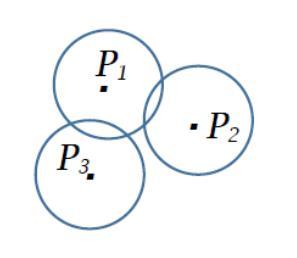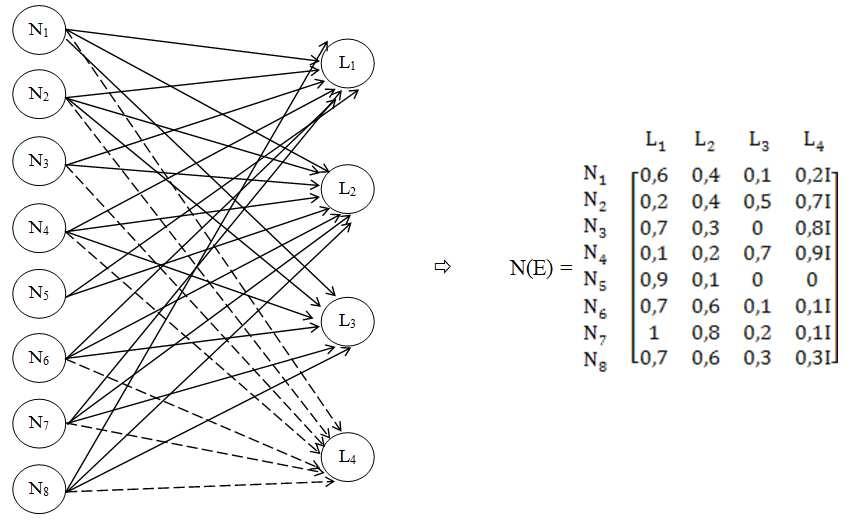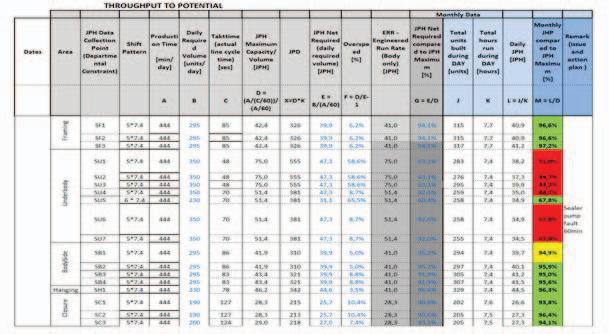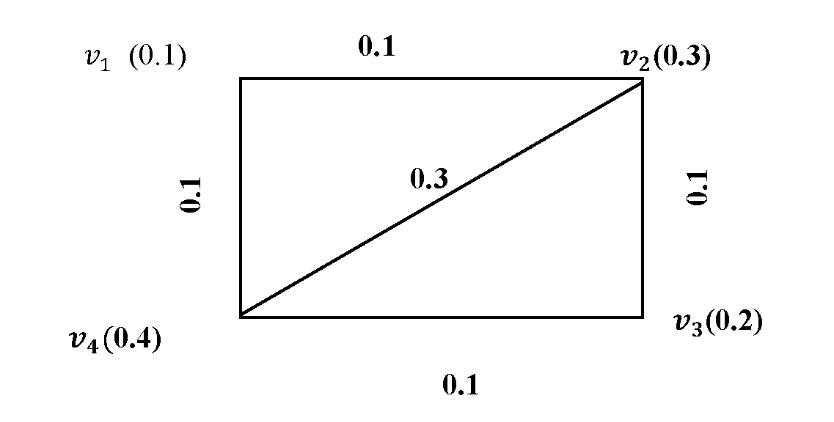
19 minute read
From Linked Data Fuzzy to Neutrosophic Data Set Decision Making in Games vs. Real Life
Florentin Smarandache, Mirela Teodorescu
Advertisement
Florentin Smarandache, Mirela Teodorescu (2016). From Linked Data Fuzzy to Neutrosophic Data Set Decision Making in Games vs. Real Life. New Trends in Neutrosophic Theory and Applications I: 115-125
Abstract
In our lives, reality becomes a game, and in the same way, the game becomes reality, the game is an exercise, simulation of real life on a smaller scale, then it extends itself into reality. This article aims to make a connection between decision making in game which comprises all the issues that intervene in the process and further making a connection with real life. The method for identification involved, detected or induced uncertainties is a jointing process from linked data fuzzy to neutrosophic data set on a case study, EVE Online game. This analysis is useful for psychologists, sociologists, economic analysis, process management, business area, also for researchers of games domain. Keywords
Game theory, real life, decision making, neutrosophic theory, uncertainty.
1. Introduction
The aim of this study is to offer a method of refining the uncertainties, neutral states appeared in a process being a game reflected in the real life, through neutrosophic theory.
In higher forms concerning us, we can associate the function of play as derived from two basic aspects met by us: “as a contest for something or a representation of something”, as asserts Huizinga (Huizinga,1980, p.13).
The games, in their configuration, structure, follow the rules, procedures, concepts defined by game theory. There are three categories of games: games of skills, games of chance and games of strategy.
Games of chancetype face uncertainty and risk in decision making process (Janis, Mann, 1977). These decisions are evaluated, analyzed and taken in accordance with game theory, according to the social system involved.
Neutrosophic theory applied in decision making for solving the uncertainties matches with game theory requirements (Von Neumann, Morgenstern, 1944).
From the multitude of games we chose to study neutrosophic making decisions, for the case of the EVE online, a complex game both as structure and players, involving complex criteria of the decisions making mechanism.
We have to take into consideration that Dr. Eyjólfur Guðmundsson as economist of the game EVE Online, applied the concept of Vernon Smith, Nobel Laureate for experimental economics, asserting: "This would be any economist's dream, because this is not just an experiment, this is more like a simulation. More like a fully-fledged system where you can input to see what happens" (http://www.ibtimes.co.uk/eve-online-meet-man-controlling-18-million-space-economy1447437).
Our opinion is that the game is a precious source of ideas, energy, adrenaline, a simulator, an exercise for real life that promotes success but also decay through addiction, tolerance and thus it can be treated just like drugs. But we want to discuss only the positive side of the game.
This game covers both linked data and social media practices, in this context, social media representing computer-mediated tools that allow people or entities to create, share, or exchange information, emotions, feelings, ideas, pictures/videos in virtual communities and networks and on the other side, to provide linked data as method of publishing structured data, interlinked and to become more useful through semantic queries. It builds upon standard Web technologies (such as HTTP, RDF and URIs). It extends them to share information in a way that can be read automatically by computers. 2. Background
We are surrounded by data characterized bythe performance of our activities, the fuel efficiency of our cars, a multitude of products from different vendors, the values of the air parameters, or the way our taxes are spent. It helps us to make better decision; this data is playing an increasingly central role in our lives, driving the emergence of data economy. Increasing numbers of individuals and organizations are contributing to this deluge by choosing to share their data with others. Availability of data is very important in evaluating, analysis, making decision process (Heath, Bizer, 2011). 2.1 Fundamentals of Neutrosophic Theory
Uncertainty represents an unsolved situation, it defines a fuzziness state. Uncertainty is an actant’s subjective state related to a phenomenon, or decision making, and it becomes objective when it is inserted in a probability calculus system or into an algorithm.
It is mentioned in specialty literature that Zadeh introduced the degree of membership/truth (t), the rest would be (1-t) equal to f, their sum being 1, so he defined the fuzzy set in 1965 (Zadeh, 1965). Further, Atanassov introduced the degree of non- membership /falsehood (f) and he defined the intuitionistic fuzzy set (Atanassov, 1986), asserting: if 0<= t + f<= 1 and 0<= 1 – t – f, it would be interpreted as indeterminacy t + f <= 1. In this case, the indeterminacy state, as proposition, cannot be described in fuzzy logic, is missing the uncertainty state; the neutrosophic logic helps to make a distinction between a “relative truth” and an “absolute truth”, while fuzzy logic does not. As novelty to previous theory, Smarandache introduced and defined explicitly the degree of indeterminacy/ neutrality (i) as independent component 0 <= t+ i +f<=3 . In neutrosophy set, the
three components t, i, f are independent because it is possible from a source to get (t), from another independent source to get (i) and from the third source to get (f). Smarandache goes further; he refined the range (Smarandache, 2005).
Neutrosophic Set: Let U be a universe of discourse, and M a set included in U. An element x from U is noted with respect to the set M as x(T, I, F) and belongs to M in the following way: it is t% true in the set, i% indeterminate (unknown if it is) in the set, and f% false, where t varies in T, i varies in I, f varies in F (Smarandache, 2005).
Statically T, I, F are subsets, but dynamically T, I, F are functions/operators depending on many known or unknown parameters. Neutrosophic set generalizes the fuzzy set (especially intuitionistic fuzzy set), paraconsistent set, intuitionistic set, etc. 2.2 Applicability of Neutrosophic Theory
Applicability of neutrosophic theory is large, from social sciences such as sociology, philosophy, literature, arts (Smarandache, Vlăduțescu, 2014; Smarandache, 2015; Păun, Teodorescu, 2014; Opran, Voinea, Teodorescu,2014; Smarandache, Gîfu, Teodorescu, 2015 ) to sciences such as physics, artificial intelligence, mathematics (Smarandache, Vlădăreanu, 2014).
There are some remarkable results of netrosophic theory applied in practical applications such as artificial intelligence (Gal et al, 2014), in robotics there are confirmed results of neutrosofics logics applied to make decisions for uncertainty situations (Okuyama el al 2013; Smarandache, 2011), also for the real-time adaptive networked control of the robot movement on surface with uncertainties (Smarandache, 2014).
Athar Kharal has also a contribution to multi criteria making decision (MCDM) developing an algorithm of uncertainty criteria selection using neutrosophic sets. The proposed method allows the degree of satisfiability (t), non-satisfiability (f) and indeterminacy (i) mentioning a set of criteria represented by neutrosophic sets (Kharal, 2014).
There is no instant game, or instant action; if they existed, it would involve a very limited time fund, if they were instant, we could calculate the uncertainty, we should not have too many variables. If the time is longer, more variables appear, more uncertainties. We evaluate the situation “1” according to what every social actor wants, it is the sustained decision. The state "0" represents the decision that is rejected by social actors. Between “0” and “1” remain states of uncertainty, neutrality, uncertain decisions. In this manner we extend the fuzzy theory to neutrosophic theory. In fact, the novelty of neutrosophy consists of approaching the indeterminacy status. (Smarandahe, 2005).
Starting of this point, we are confidence that neutrosophic theory can help to analyze, evaluate and make the right decision in process analysis taking into account all sources that can generate uncertainty, from human being (not appropriate skill), logistics concept, lack of information, programming automation process according to requirements, etc.
3. Games, elements of culture, double articulated
Probably, Ludwig Wittgenstein was the first academic philosopher who addressed the definition of the word game. In his work, Philosophical Investigations, Wittgenstein argued that the “elements of games, such as play, rules, and competition”, all contribute to define what games are, but not totally (Wittgenstein, 1953). Jean Piaget suggested in his work, Genetic Epistemology, “that children think differently than adults and proposed a stage theory of cognitive development”. He was the first one to note that children play an active role in gaining knowledge of the world, playing games; children can be thought of as "little scientists" who are actively constructing their knowledge and understanding of the world (Piaget, 1970; Piaget, 1983).
Argument 1.
Games are culture related, everything is repeated by as many people as possible, andit becomes acceptable to most, spread and cultivated (e.g. internet; it shows a minimal know-how). Culture is acomplexprincipleof behavior,spiritual and material valuescreated bymankind, beliefs, tradition and art, passed down from generation to generation. The sense of culture finds its significance in the life of an individual and society. In this context, "any authentic creation is a gift to the future." – asserts Albert Camus.
For humans, culture is the specific environment of existence. It defines an existential field, characterized by a synthesis between objective and subjective, between real and ideal. Culture defines a synthetic human way of existence and it is the symbol of man's creative force. It represents a real value system.
Argument 2.
Games produce culture, the Internet being unlimited, is a huge catalyst of desire. It is a sublime achievement in economic terms. For example, the Internet can offer so many texts about Kant that you never got around to finish in silence any of his “Critiques”. The time of assimilation is now dedicated to search. More than ever, McLuhan's equation says it all about the Internet: “The medium is the message”, says a voice that is heard beyond any meaning of utterances made. Only the pleasure, the voice, the search on Internet are now authentic. Time is limited, not space. From time only desire can provide the intensity necessary to forget this ontological asymmetry (Luhan, 1967).
The Internet allows many people to discover their identity more easily. Some people who were shy or lonely or feel unattractive, discover that they can socialize more successfully and express themselves more freely in an online environment. Being able to pretend you are someone else is an important mental skill that the child acquires if he is involved in such games. The same thing is experienced by an adult on Internet games, on Facebook, for example, a doubling of personality, a place where you can be different, without constraints, where you are at your own free will, where decision belongs entirely to you, where only uncertainties hinder you. You can think what you want but you can never think of everything that can be thought. If it were possible for every man to think all that is conceivable and with a consistent content, there would be no freedom of thought or thoughts individualized particular to each topic. Mentally anticipating the future, one can access one’s individual mental states of the
distant future; one can get art work depicting thoughts, theories or advanced and complicated scientific technologies, currently unimaginable. 4. Case study
EVE Online is a “massively multiplayer online game set 23,000 years in the future. As an elite pilot of one of the four controlling races, the player will explore, build, and dominate across an universe of over 7,000 star systems”1, see Figure 1. In EVE Online the possibilities are endless. Eve Online is a peculiar concept, it is a simulation, it is an experiment which mirrors the social interactions and communications of the real world, just like the real world, it has a fully functioning economy. In fact, “it has an economy which could be used and studied in order to help what we do in the real world, according to the man charged with overseeing how the $18 million economy operates”2 .
Figure 1.Very real implications
While what is happening in universe environment of EVE planets in the far off star systems may not have much relevance in today's world, but the way the EVE economy functions could have very real implications: "We try to have a relative balance of money coming in and money coming out and the increase per month should represent the net increase in economic value”; “We function as a national economics institute, statistics office and central bank giving advice to government, with the government being the developers and us being the monitoring authority"3 .
Considering data of EVE Online game, the complexity of environment, we can estimate some causes that can generate uncertainties such as: unknown universe; cohesion of the team members; alliance trust; financial system crisis; equipment reliability.
1 https://www.eveonline.com 2 David Gilbert, Eve Online: Meet the Man Controlling the $18 Million Space Economy, International Business Time, May 6, 2014 3 http://www.ibtimes.co.uk/eve-online-meet-man-controlling-18-million-space-economy-1447437
For each of these causes the occurrences in a time unit are analyzed (e.g.: 1 week), the space M assimilated to the environment of universe, the governance is poorly defined in this space: the control of universe, defeat the forces of evil, building a stable system. According to this conditions we can simulate the situation by a Pareto Chart, see Figure 2:

Figure 2. Pareto Chart Step 1
Pareto analysis is a creative way of evaluation causes of problems because it helps to stimulate the processes, thinking and organize thoughts, assessing the causes that lead to system instability through neutrosophic theory.
In this context, we define a space M consisting of 5 elements, where t means true, i means uncertainty and f means false: M = { a1 (t1, i1, f1), a2 (t2, i2, f2), a3 (t3, i3, f3), a4 (t4, i4, f4), a5 (t5, i5, f5)} Unknown universe: a1(t1, i1, f1) Team cohesion: a2(t2, i2, f2) Alliance trust: a3(t3, i3, f3) Financial stability: a4(t4, i4, f4) Equipment reliability: a5 (t5, i5, f5)
According to Pareto Chart, we established the rate for each space element percentage for the set (t, i, f).
Analyzing the content of elements data, we can establish that relative frequency of events means uncertainty and events solving means true, respectively non solving, false. The process is revealed in Table 1.

Neutrosophic interpretation gives an ordered list of alternatives of uncertainties, depending on us, which is the most preferred element.
We will stop at a2component that generates uncertainty for the cause of “team cohesion”. Pareto Chart says that by addressing the cause 20%, it determines 80% uncertainty and can also solve 80% of problems of the system stability. We have to concentrate on uncertainty of a2 component, to reduce its value, a21(t21, i21, f21) a21(53,85%, 25,49%, 46,15%) in the first step of the process.
The refining process, step 2, can be seen in the next set of data presented in Figure 3.

Figure 3. Pareto Chart Step 2
The relative dataset for the step 2 is shown in Table 2, where we follow up the element a22.

a22(t22, i22, f22) a22(66,67%, 15,38%, 33,33%) the second step of the process. On the third step of the refining process, the data set is presented in Table 3.

a23(t23, i23, f23) a23(75%, 10.81%, 25%) the third step of the process. a24(t24, i24, f24) a24(100%, 8,33%, 0%) the last step of the process. The data set of last step of the refining process, is shown in Table 4.

We show below the effects of refining process in 4 steps, until the value of F is zero. The representation of “team cohesion” evolution is shown in Figure 4.

Figure 4. Refining the process for “Team cohesion”, element of space M
The process of The Uncertainty Risk Management will take into consideration: Uncertainty management is a creative process, it involves identifying, evaluation and mitigation of the impact of the uncertainties in the process; Uncertainty management can be very formal with defined work process, or informal with no defined processes or methods; Uncertainty evaluation prioritizes the identified uncertainties by the likelihood and the potential impact if the event happens; Uncertainty mitigation is the development and deployment of a plan to avoid, transferring, sharing and reducing the process uncertainties.
When we try to make a good decision, a person must weigh the positives, negatives and uncertainty of each option, and to consider all the alternatives. For effective decision making, a person must be able to forecast the outcome of each option as well, and based on all these items, to determine which option is the best for that particular situation.
Decision-making is identified as a cognitive process that results in the selection of a belief or an action among several alternative possibilities. Decision-making is a complex process of identifying, analyzing and choosing alternatives based on the values and preferences of the decision maker. Decision-making is one of the central activities of management and it is an important part of any implementation process (Kahneman, Tversky, 2000).
Usually, in our daily lives, we implicitly compare multiple criteria and we want to be comfortable with the consequences of such decisions that are mostly made based only on intuition. On the other hand, when we confront with high stakes, it is important to structure the problem and to evaluate multiple criteria. In decision making process based on multiple criteria (Multi Criteria Decision Making) of whether to do an important issue or not, there are involved not only very complex multiple criteria, there are also inferred multiple parties who are deeply affected from the consequences, because present decisions, act in the future.
Decisions making related to games area, shows its similitude with real life, can be easily transferred to the real world. It is our choice whether to do this or not. 5. Conclusions
Decisions making is a complex act including variables related to uncertainty, with implications for the future work. Uncertainty, in turn, involves classification criteria based on methods that may be applied for determining the degree of uncertainty and settlement. Establishing the types of variables that influence uncertainty, it makes possible the identification of the decisions that we are referring, that will influence, will constrain the process on the one hand, and will be influenced and constrained by a specific decision on the other hand.
Problem solving and decision-making are important skills for business and life. Problemsolving often involves decision-making, and decision-making is especially important for management and leadership. Between them there is the correspondence: identification of the problem vs. frame of the decision; exploring the alternatives vs. improve to address needs and identify alternatives; select an alternative vs. decision and commitment to act; implementation of
the solution vs. management of the consequences; evaluation of the situation vs. management of the consequences and frame the related decisions.
What we deduced on the basis of this study is that the game is reality and reality is game. We build reality through the game, we take risks that include uncertainties, the game becomes a training and an experimentation place for many specialists, proving that the school becomes life. Here is how the neutrosophic theory, guide us to be closer to solve uncertainties, transforming them into true or false, stable and controllable states of the systems. References
1. Adler, A. (2011).The practice and theory of individual psychology. Martino Fine Books. 2. Aumann, R.,Peleg, P.(1960). Von Neumann-Morgenstern solutions to cooperative games without side payments, Bull. Am. Math. Sot.66, 173-179. 3. Aumann, R., Hart,S.ed. (1992, 2002). Handbook of game theory with economic applications v. 1. Elsevier/North-Holland, Amsterdam. 4. Berne, E. (1964).Games people play: the basic hand book of transactional analysis. New York: Ballantine Books. 5. Erikson, E. (1993).Childhood and society. W.W. Norton & Company, Inc. 6. Gal, I.A., Vlădăreanu, L., Smarandache,F., H. Yu, M. Deng. (2014). Neutrosophic logic approaches applied to” rabot” real time control ,Vol 1,pp. 55-60,EuropaNova, Bruxelles. 7. Heath,T., Bizer,C.,(2011). Linked data: evolving the web into a global data space (1st edition). Synthesis lectures on the semantic web: theory and technology, 1:1, 1-136. Morgan & Claypool. 8. Huizinga, J.(1980). Homo ludens, Redwood Burn Ltd Trowbridge & Esher Jenkins, h.interactive audiences? the 'collective intelligence' of media fans, http://web.mit.edu/21fms/People/henry3/collectiveintelligence.html 9. Janis I., Mann, L. (1977). Decision making: a psychological analysis of conflict, choice, and commitment. New York: Free Press. 10. Kharal, A. (2014). A neutrosophic multi-criteria decision making method. New Mathematics and Natural Computation, 10 (2),143–162. DOI: 10.1142/S1793005714500070 11. Kahneman,D.,Tversky, A. (2000). Choices, values, and frames. New York; Cambridge, UK: Russell Sage Foundation; Cambridge University Press. 12. Mann, L., Harmoni, R., Power, C. (1991). The GOFER course in decision making, In Baron, Jonathan; Brown, Rex V. Teaching decision making to adolescents. Hillsdale, NJ: Lawrence Erlbaum Associates. pp. 61–78. 13. McLuhan, M. (1967).The Medium is the Massage: An Inventory of Effects, Penguin Books. 14. Okuyama,K.,MohdAnasri, Smarandache, F., Kroumov, V., (2013). Mobile robot navigation using artificial landmarks and GPS. Bulletin of the Research Institute of Technology, Okayama University of Science, Japan, 31, 46-51. 15. Opran, E.,Voinea, D.,Teodorescu, M., (2015). Art and being in neutrosophic communication. International Letters of Social and Humanistic Sciences, 6(1), 16-27. 16. Păun, M.G., Teodorescu, M., (2014). Hermeneutics can make beauty and ugly as neutral (as neutrosophic). Social Sciences and Education Research Review, 2, 252-61. 17. Popper, K.(2011).The Open Society and Its Enemies, Publisher George Routledge And Sons Limited. 18. Piaget, J. (1983). Piaget's theory. In P. Mussen (ed) Handbook of Child Psychology. 4th edition.Vol. 1. New York: Wiley. 19. Piaget, J. (1970). Genetic epistemology. New York: Norton. 20. Smarandache, F. (2015).Neutrosophic social structures specificities. Social Sciences and Education Research Review, 2(1), 13-20.
21. Smarandache, F., (2005). A unifying field in logics: neutrosophic logic, neutrosophy, neutrosophic set, neutrosophic probability and statistics. American Research Press, Rehoboth. 22. Smarandache, F.,Vlădăreanu, L.,(2014). Applications of neutrosophic logic on robots. Neutrosophic Theory and its Applications,Collected papers Vol.1,Brussels, 2014. 23. Smarandache, F. (2015). Thesis-antithesis-neutrothesis, and neutrosynthesis. Neutrosophic Sets and Systems, 8, 64-67. 24. Smarandache, F. (2015). (T, I, F)-neutrosophic and I-neutrosophic structures. Neutrosophic Sets and Systems, 8, 3-10. 25. Smarandache, F., Vlăduțescu, S.,(2014). Communicative universal convertibility matter-energyinformation. Social Sciences and Education Research Review,1, 44-62. 26. Smarandache, F.,Gîfu, D., Teodorescu, M., (2015). Neutrosophic elements in discourse. Social Sciences and Education Research Review, (2), 125-32. 27. Smarandache, F., Gîfu, D., Teodorescu, M. (2015). Neutrosophy, a possible method of process analysis uncertainties solving , chapter in book- Uncertainty Communication Solution in Neutrosophic KeyFlorentin Smarandache, Bianca Teodorescu, Mirela Teodorescu (Editors). ISBN: 978-1-59973-371-5 28. Thompson, J. (2006). "Violent video games feed unhealthy ideas to young kids". Tacoma News Tribune, January 8. 29. Şahin, R., Multi-criteria neutrosophic decision making method based on score and accuracy functions under neutrosophic environment. http://arxiv.org/abs/1412.5202 30. Vlădăreanu, L. , Gal, I.A. , H. Yu, M. Deng, (2015).Robot control intelligent interfaces using the DSmT and the neutrosophic logic. International Journal of Advanced Mechatronic Systems, 6(2-3), 128-135. 31. Von Neumann, J., Morgenstern,O., (1944).Theory of games and economic behavior. Princeton University Press. 32. Wittgenstein, L. (1953). Philosophical investigations. Oxford: Blackwell.







